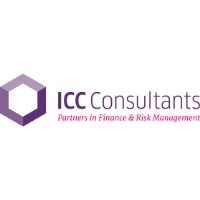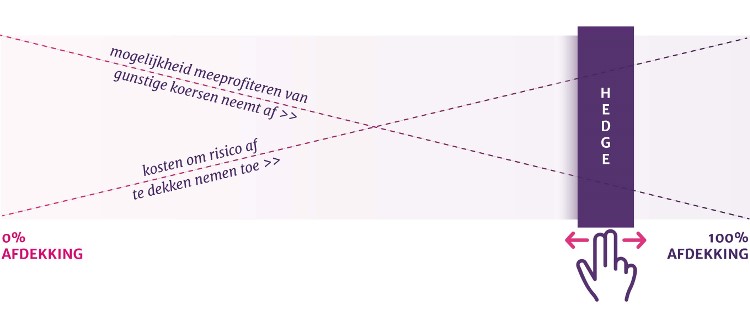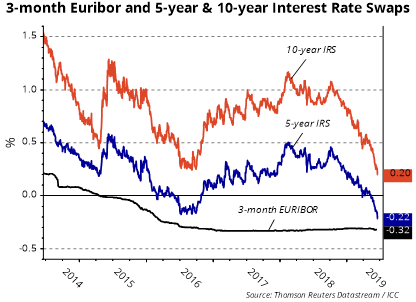Why Michel decided to explore the World of Treasury
| 22-07-2019 | by treasuryXL | Kendra Keydeniers

Our next RT story is the one of Michel van Baardwijk. He graduated as a Register Treasurer (RT) in 2017. Michel is specialized in the Public Sector and faced many challenges working at Vestia as Treasurer.
Vestia, formally ‘Stichting Vestia’ is the largest public housing corporation in the Netherlands, which is headquartered in Rotterdam. The corporation owns (and rents out) about 78,000 houses and 8,000 other “rentable units”.
Vestia received media attention in 2011 and 2012 on the topic of interest derivatives. This attention continues until today. The follow up and the consequences of the transactions made in the past determine most of Michel’s treasury activities.
-
What for you was the main reason to start a career in treasury?
Actually my career in treasury was not premeditated. I liked the courses corporate finance during my studies business economics/econometrics in Tilburg, but my first jobs at Philips and the municipality of Rotterdam had nothing to do with treasury. Later when I worked as a financial manager or controller treasury was one of the many elements of the job, until the take-over by Vestia in 2011. In the re-organisation of 2013 I applied for Treasury and I got the job.
-
Why did you start with the RT program?
Because the portfolio of Vestia was more than 20 times the portfolio I managed before, refreshing my knowledge and skills was priority number 1. I got some training on the job by an experienced interim treasurer and I oriented on possible courses. The RT program at VU offered the best combination of theory and practice.
-
What are key words that you would use to describe the program?
The program is small scaled and interactive. You get to know all your fellow students very fast and there is enough time to exchange experiences.
-
Which topics covered were most interesting?
The most interesting courses for me were those courses I had little experience in: international finance and cash management. Piece of cake for seasoned treasurers, but new stuff for me. I also took courses in macro economics and behavioural finance.
-
Can you describe what your research and thesis was about?
My thesis researched the effects of new, tougher, legislation on the way treasury for housing associations is organised. I thought many had changed their processes, but most processes were already adequately organised and in control before 2012. With more emphasis on compliance after 2015.
-
How did the education help you in your career?
The RT program has helped me to become a professional in treasury in a short time.
-
What surprising elements did the program hold that you did not expect?
Behavioural finance was an eye opener for me. I took some psychology courses during university (marketing, organisation) but the impact of psychological elements on decision making was a positive surprise.
-
Are you still in touch with your peers?
Of course. I meet fellow students at DACT-events, we still have a Whatsapp-group and we are linked via LinkedIn.
-
What other treasury education programs did you consider and why did you choose this one?
I researched several other programs (NIVE QT, Improfin, modular courses), but VU offered a proven concept which was very practical for me (every week courses on Thursday afternoon and evening) and started very soon.
-
Did following the program influence your relation with your family, friends and/or colleagues?
Doing classes and assignments takes some planning. And sometimes you have to say No at home or at work, or skip class due to a priority job. Commuting by train gave me much time for reading and writing but not enough. Many weekends were spent writing my thesis, and also two holidays. Fortunately my wife took a course herself and my kids had their own exams.
-
Can describe a treasury topic you learned about and you could directly apply in your job?
In the first lecture I learned something about the consequences of a large divestment I had not thought about. Fortunately we could solve this directly. I also got more insight in the way banks were pricing loans, which resulted in better quotes.
More stories please! Read the RT story of Jarno, Mathieu and Richard and/or read more info about the RT program here.
The post-graduate Executive Treasury Management & Corporate Finance programme combines two finance disciplines: Treasury Management and Corporate Finance. These disciplines largely overlap and are inextricably connected.
After a successful completion of all required modules, the title of Registered Treasurer (RT) is conferred by the Registered Treasurer foundation.
As of last year the Register Treasurer (RT) program at the University of Amsterdam is taught in English. This is an important change as the program used to be in Dutch.
The course will start on 1 September 2019. Why wait? Apply today!












 Auke Middel
Auke Middel
 Presenter
Presenter



